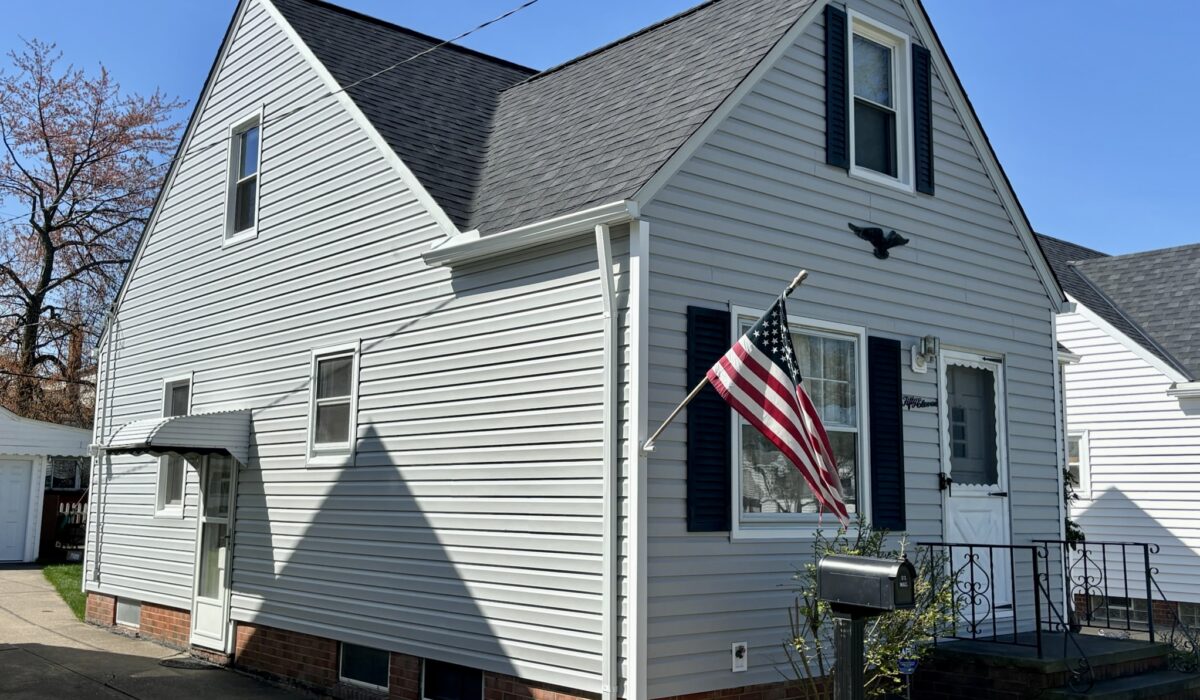- By Phoenix Roofing
- ParmaRoofingCompany
- 0 Comment
The Ultimate Guide to Siding Replacement: Transform Your Home’s Exterior
When it comes to home improvement projects, siding replacement often doesn’t top the list. However, it’s one of the most impactful upgrades you can make. Replacing your siding not only enhances your home’s curb appeal but also improves energy efficiency, protection, and overall value. In this guide, we’ll explore the reasons to replace your siding, the types available, the replacement process, and tips for a successful project.
Why Replace Your Siding?
1.Enhanced Curb Appeal
Looking for expert roofers in Parma Heights?
Phoenix Roofing & Solar is your #1 Parma roofer.
Make an appointment now!
New siding dramatically improves your home’s exterior. Whether you’re selling or just want a fresh look, updated siding provides an instant facelift.
2.Improved Energy Efficiency
Modern siding materials offer better insulation. This helps regulate your home’s temperature, lowers energy bills, and makes your living space more comfortable.
3.Increased Protection
Over time, siding can deteriorate, failing to protect your home. Replacing old siding prevents moisture from seeping in, which can cause mold, mildew, and structural damage.
4.Boosted Property Value
New siding is a valuable investment that increases your home’s market value. Buyers appreciate the improved appearance and protection that new siding provides.
Types of Siding
1.Vinyl Siding
Vinyl is a popular, affordable, and durable choice. It’s low-maintenance and comes in many colors and styles. Vinyl is also resistant to pests and rot, making it a practical option for many homes.
2.Fiber Cement Siding
Fiber cement is strong and resilient. It’s resistant to fire, insects, and weather damage. This siding can mimic the look of wood, stucco, or masonry, offering a high-end appearance with less maintenance.
3.Wood Siding
Wood siding gives a classic, natural look. While it requires more maintenance to protect against pests and moisture, its aesthetic appeal is unmatched. Cedar, pine, and redwood are common types of wood siding.
4.Engineered Wood Siding
Engineered wood offers the beauty of wood with added durability. It’s treated to resist moisture and pests, making it a more robust alternative to traditional wood siding.
5.Metal Siding
Aluminum and steel siding are durable and low-maintenance. They resist fire, pests, and rot, while also providing a sleek, modern look. Metal siding is eco-friendly, as it can be made from recycled materials.
The Siding Replacement Process
1.Inspection and Planning
First, inspect your current siding and the underlying structure. Any damage must be repaired before installing new siding. Planning involves choosing the right material and color for your home.
2.Removal of Old Siding
Next, carefully remove the old siding. This step may include removing old insulation or addressing any structural issues discovered during inspection.
3.Preparation
Prepare the surface for the new siding by installing a weather-resistant barrier and adding insulation to improve energy efficiency.
4.Installation
The new siding is installed according to manufacturer guidelines. Proper installation is crucial for durability and performance. This includes cutting, fitting, and securing siding panels.
5.Finishing Touches
Once the siding is installed, apply the finishing touches. This may include installing trim, caulking gaps, and painting or staining, ensuring the siding looks great and functions well.
Tips for a Successful Siding Replacement
1.Choose the Right Material
Consider your budget, climate, and desired maintenance level when selecting siding. Each material has unique advantages and disadvantages.
2.Hire a Professional
Siding replacement is a complex job requiring expertise. Hiring a professional contractor ensures the job is done correctly. Check for proper licensing, insurance, and reviews before making a decision.
3.Consider Insulation
Upgrading insulation during the siding replacement process can enhance your home’s energy efficiency. Discuss insulation options with your contractor.
4.Plan for Maintenance
Even low-maintenance siding needs occasional cleaning and inspections. Regular upkeep extends the life of your siding and keeps it looking new.
5.Check for Warranties
Many siding materials come with warranties. Be sure to understand the terms and keep all related documents for future reference.
Conclusion
Siding replacement is an investment that offers numerous benefits. It enhances your home’s appearance, improves energy efficiency, and provides better protection. By selecting the right materials and hiring experienced professionals, you can ensure a successful siding replacement project that adds value and beauty to your home for years to come.

